Introduction .
The 200 Euros is a significant denomination in the euro currency system, symbolizing the value and stability of the European economy. In this blog post, we will delve into the design, security features, and historical significance of the 200 euro bill. By understanding the key elements of this banknote for sale, we can appreciate its importance in financial transactions and its contribution to the cultural and economic fabric of Europe.
Design of the 200 Euros.
The 200 euro bill boasts an intricate design that reflects the rich cultural heritage of Europe. Its dimensions are 153mm x 82mm, making it one of the larger denominations in the euro currency. The dominant colors are yellow and brown, with a theme centered around architectural styles from the Baroque and Rococo periods.
The front of the 200 euro bill features a portrait of a European architectural motif, depicting windows and gates. This design represents openness and cooperation among European nations. Additionally, the bill showcases an impressive hologram strip, which changes color when tilted, adding an extra layer of security.
On the reverse side, the bill showcases an artistic representation of a bridge, symbolizing connectivity and collaboration. The design elements, including the intricate patterns and raised ink, make the 200 euro bill both visually appealing and difficult to counterfeit.
Security Features of the 200 Euro Bill .
The European Central Bank (ECB) has implemented several advanced security features on the 200 euro bill to ensure its authenticity and protect it from counterfeiters. These features include:
a) Holograms and Watermarks: The holograms on the bill display shifting images and colors when tilted, making them difficult to reproduce. Watermarks featuring the denomination and an architectural motif are embedded in the paper and are visible when held up to light.
b) Security Thread: A thin, embedded security thread runs vertically through the bill. When held up to the light, it reveals the euro symbol and the denomination.
c) Raised Printing and Microprinting: Certain parts of the bill, such as the initials of the European Central Bank in microprinting, have raised ink that can be felt by touch. Microprinting is used for intricate patterns and text that is difficult to replicate accurately.
d) UV and Infrared Features: Under ultraviolet light, the bill displays fluorescent ink patterns, while infrared ink is visible under infrared light. These features are not easily replicated by counterfeiters.
Historical Significance and Usage .
The introduction of the 200 euro bill in 2002 marked an important milestone in the history of the euro currency. As one of the highest denominations, it facilitates large financial transactions within the European Union and plays a crucial role in international trade.
The bill serves as a symbol of the European Union’s commitment to economic integration and financial stability. It allows for the seamless exchange of goods and services across borders, fostering economic growth and cooperation among member countries.
Certainly! Here are a few frequently asked questions (FAQs) about the 200 euro bill along with their corresponding answers:
FAQ: Is the 200 euro bill the highest denomination in the euro currency system?
Answer: No, the 200 euro bill is not the highest denomination. The euro currency system includes higher denominations such as the 500 euro bill, which is the highest. However, the 500 euro bill is less commonly used in everyday transactions.
FAQ: Are there any special precautions I should take when accepting or handling a 200 euro bill?
Answer: Yes, it’s important to familiarize yourself with the security features of the 200 euro bill to detect counterfeit notes. Check for elements such as holograms, watermarks, security threads, and raised printing. Additionally, consider using a counterfeit detection pen or ultraviolet light to verify authenticity.
FAQ: Can I use the 200 euro bill in all European Union countries?
Answer: Yes, the 200 euro bill is accepted as legal tender in all eurozone countries. It can be used for transactions within any of the 19 European Union member states that have adopted the euro as their official currency.
FAQ: What should I do if I receive a suspicious or counterfeit 200 euro bill?
Answer: If you suspect that a 200 euro bill is counterfeit, do not accept it and notify the authorities immediately. In most cases, banks and law enforcement agencies have protocols in place to handle counterfeit currency incidents.
FAQ: Are there any limitations on the use of the 200 euro bill?
Answer: While there are no specific limitations on using the 200 euro bill, it’s important to note that some merchants may not have sufficient change for such a high denomination. It’s always advisable to carry smaller denominations or check with the establishment beforehand.
Despite its significance, the 200 euro bill has also faced criticism and concerns related to its potential use in illegal activities such as money laundering and illicit transactions. In response, authorities have implemented strict regulations and enhanced monitoring to prevent misuse.
Conclusion
In conclusion, the 200 euro bill for sale is an important component of the euro currency system. Its design showcases Europe’s architectural heritage, while its advanced security features ensure its integrity and authenticity. Understanding the historical significance and usage of this banknote provides insights into the European Union’s commitment to economic stability and cooperation.

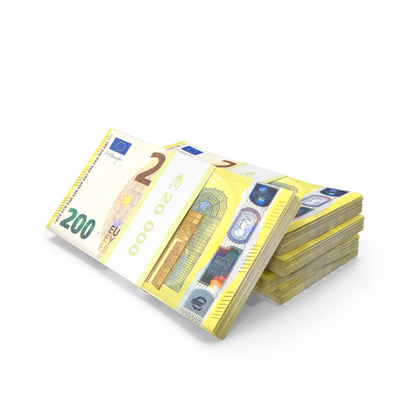
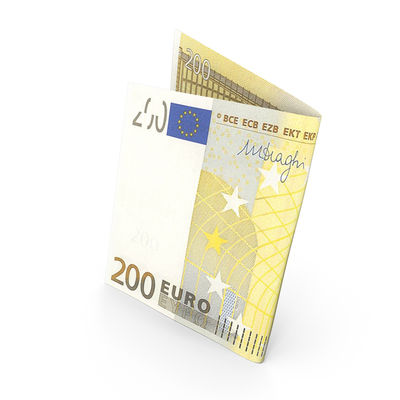

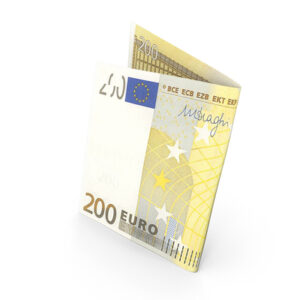





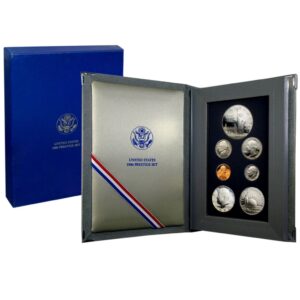

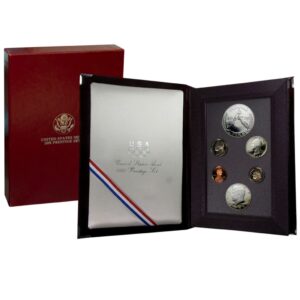
“I bought a batch of real dollar bills, and they are of excellent quality, each featuring a unique serial number.…
I recently purchased a set of real dollar bills, and I couldn't be more impressed. The quality is outstanding—each bill…
“Perfect transaction for Dollar bills. Aaron Walker’s customer service was excellent and made the whole process seamless. 💶👏”
“I’m very impressed with the real dollar bills I received. Each bill is in mint condition and has a unique…
"Fantastic service for Euro bills! Aaron was very professional and ensured my order was processed efficiently. 💶🌟🌟🌟🌟🌟"
"Superb quality Euro bills and outstanding support from Aaron. He was very attentive and resolved my concerns quickly. 💶🌟🌟🌟🌟🌟"
"Great experience with Euro bills. Aaron’s customer service was very responsive and made sure I got the best product. 💶🌟🌟🌟🌟🌟"
"High-quality real dollar bills and excellent customer service from Aaron. His assistance was key to a smooth transaction. 💵🌟🌟🌟🌟🌟"
"Very pleased with the real dollar bills. Aaron’s customer service was outstanding—he made the process effortless and enjoyable. 💵🌟🌟🌟🌟🌟"
"Ordered Euro bills and had a smooth experience. Aaron’s support was incredibly helpful, and the bills were perfect for my…
"Great experience with buying Euro bills. Aaron was very professional and ensured my order was handled efficiently. 💶🌟🌟🌟🌟🌟"
"High-quality real dollar bills and excellent customer service from Aaron. His assistance was key to a smooth transaction. 💵🌟🌟🌟🌟🌟"
"Euro bills were perfect for my project. Aaron provided fantastic customer support and made sure everything went smoothly. 💶🌟🌟🌟🌟🌟"
"Excellent service for Euro bills! Aaron was very helpful and made sure my order was processed quickly and accurately. 💶🌟🌟🌟🌟🌟
"Very satisfied with the real dollar bills I ordered. Aaron’s support was exceptional—quick, friendly, and very helpful. 💵🌟🌟🌟🌟🌟"
"Hi, I’m Laura from Sacramento. Had a smooth experience with buydollarbills.com. Aaron’s customer service was exceptional—he was very helpful and…
Aaron at buydollarbills.com provided excellent service! 💵 His knowledge and customer care made the process of buying collectible bills smooth…
Aaron provided fantastic service at buydollarbills.com! 💵 His detailed advice and prompt responses made buying collectible bills easy. 💰 Aaron’s…
Aaron’s customer service at buydollarbills.com was exceptional! 💵 He offered clear explanations and guidance throughout the buying process. 💰 Aaron’s…
Aaron’s service at buydollarbills.com was excellent! 💵 He was knowledgeable and patient, helping me with all my questions. 💰 Aaron’s…
“Fantastic quality Dollar bills and Aaron White’s support was amazing. Everything went smoothly, and I’m very satisfied! 😍💶”
"Aaron’s support at buydollarbills.com was excellent. He was very attentive to my needs and made sure my dollar bills were…
Aaron at buydollarbills.com provided outstanding service! 💵 He was very helpful and provided great advice on selecting the right bills.…
I had a great experience with Aaron at buydollarbills.com! 💵 His service was top-notch, and he provided clear, helpful information…
Aaron provided fantastic service at buydollarbills.com! 💵 He was very knowledgeable and answered all my questions with patience. 💰 Aaron’s…
"I’m very happy with buydollarbills.com. Aaron’s customer service was top-notch, addressing all my queries and ensuring my order was perfect.…
"I’m thrilled with buydollarbills.com! Aaron in customer service was exceptionally helpful, and the quality of the dollar bills surpassed my…
Excellent service from buydollarbills.com! Aaron answered all my questions promptly and with great patience. The dollar bills arrived quickly and…
"Buydollarbills.com is my go-to for collectible bills. Aaron's customer service is outstanding—friendly, efficient, and very knowledgeable. The bills always exceed…
"I had a minor issue with my order, but Aaron resolved it swiftly. The customer service was top-notch, and the…